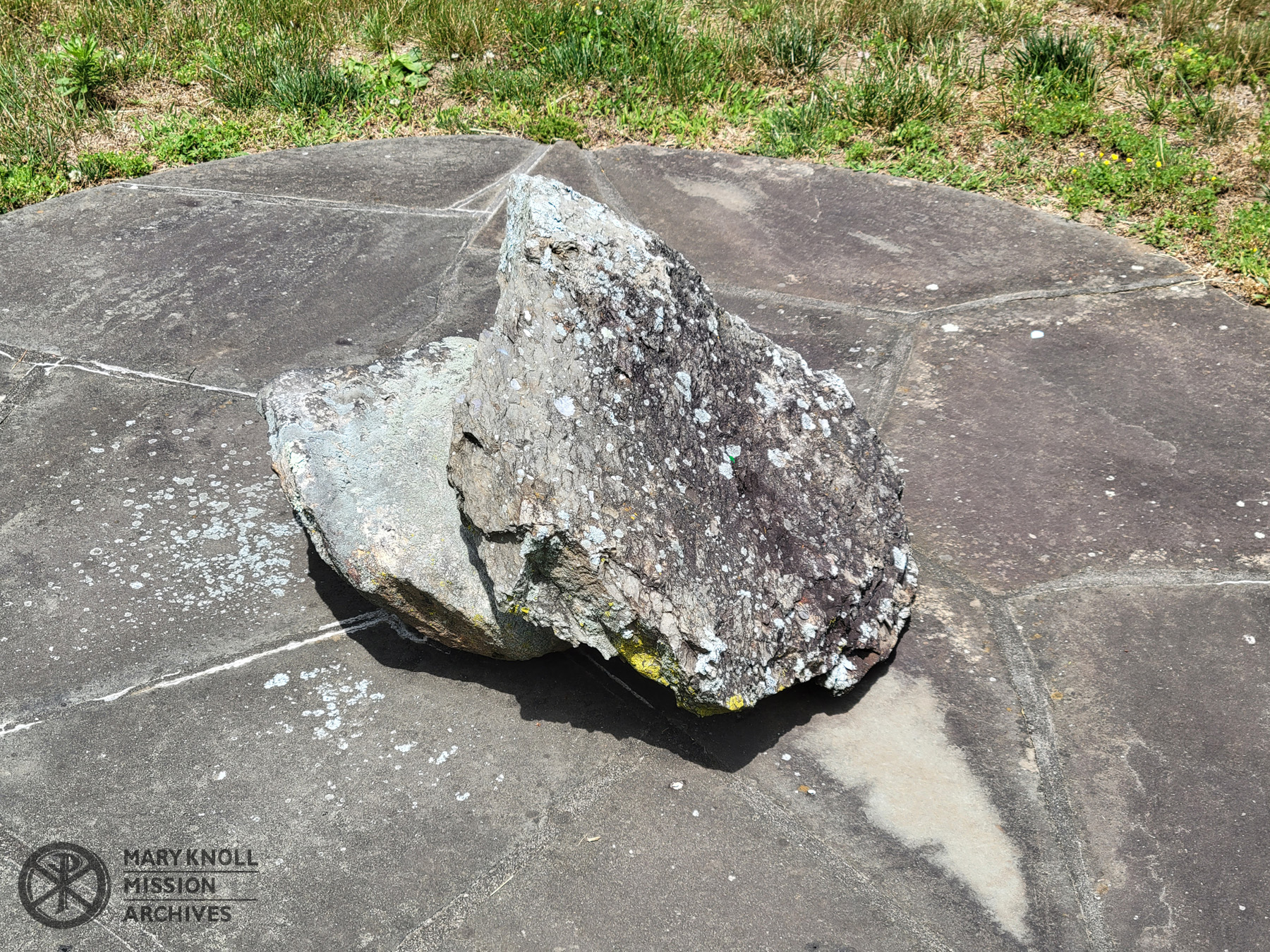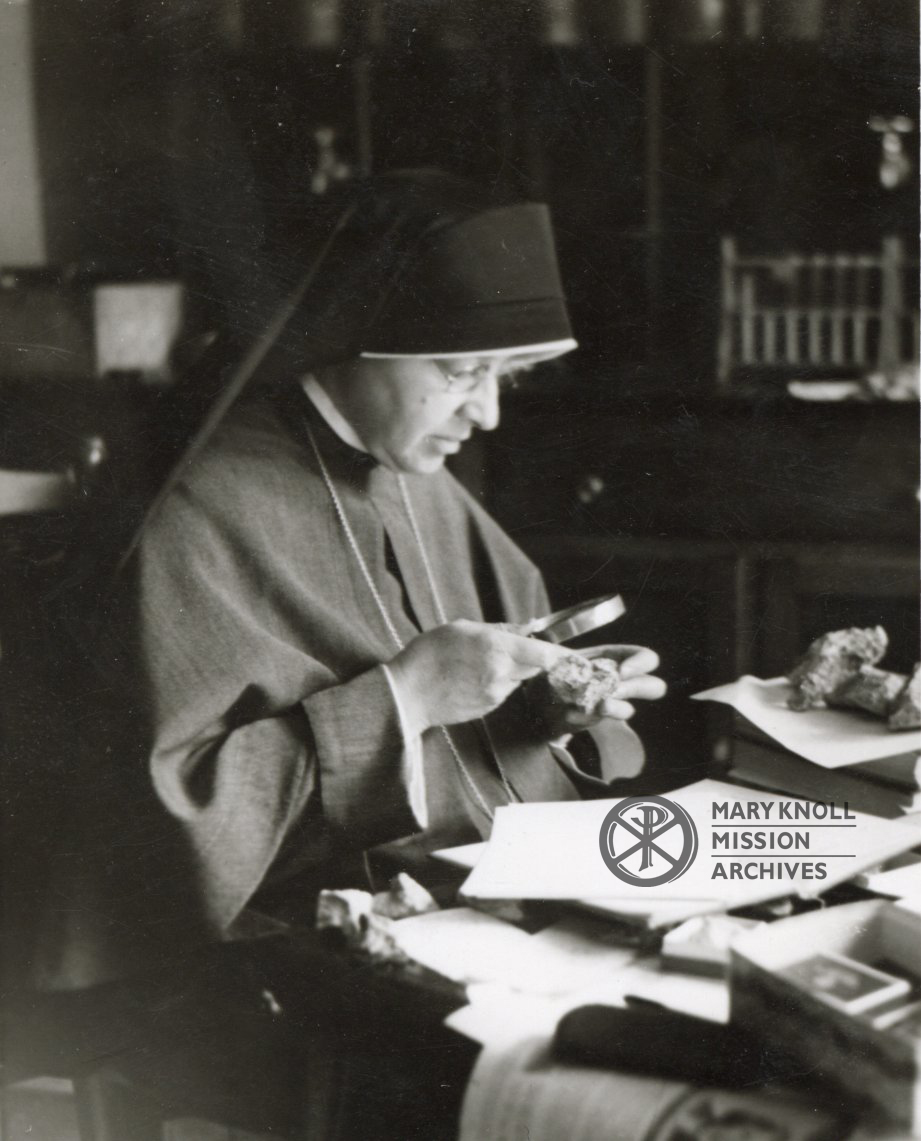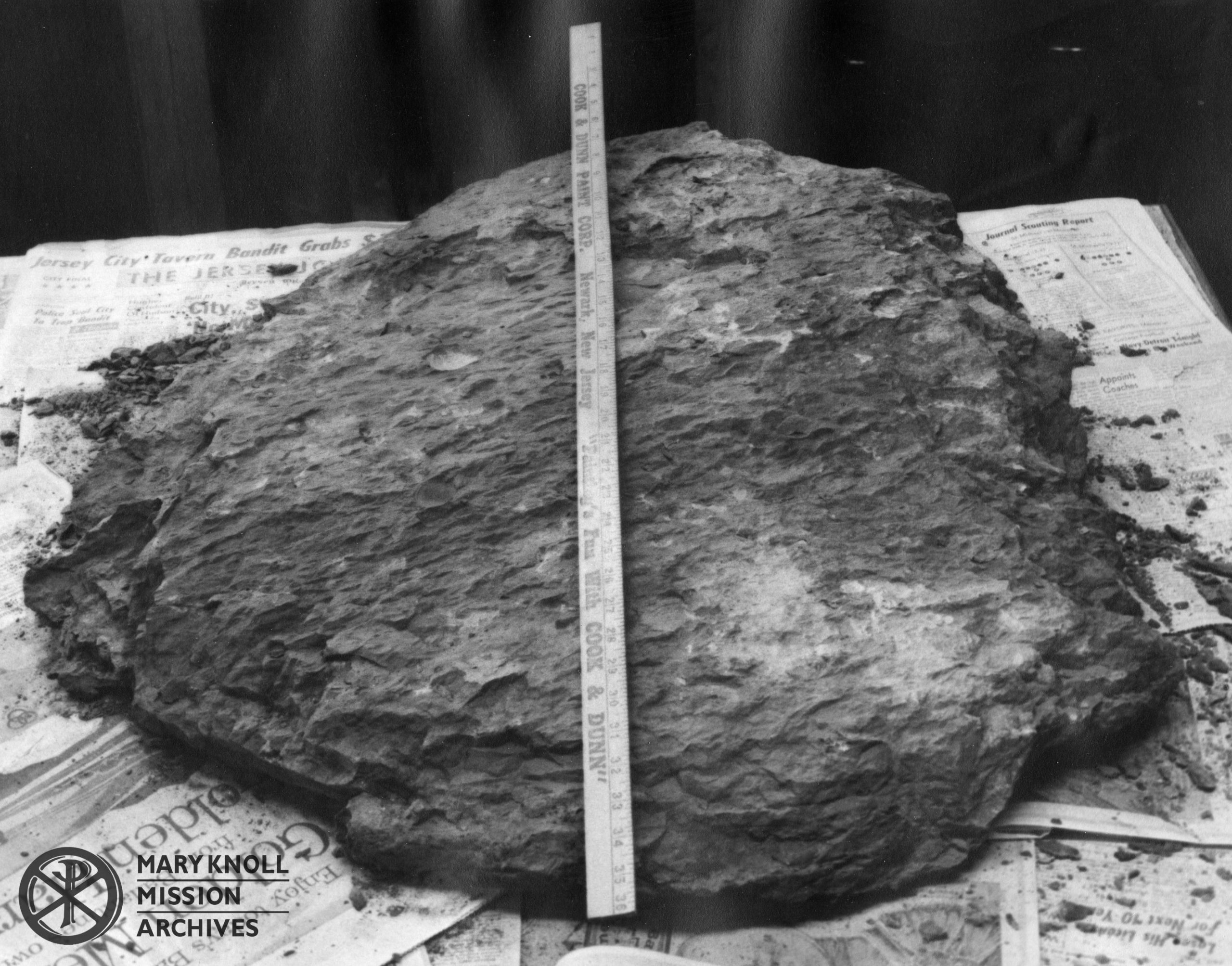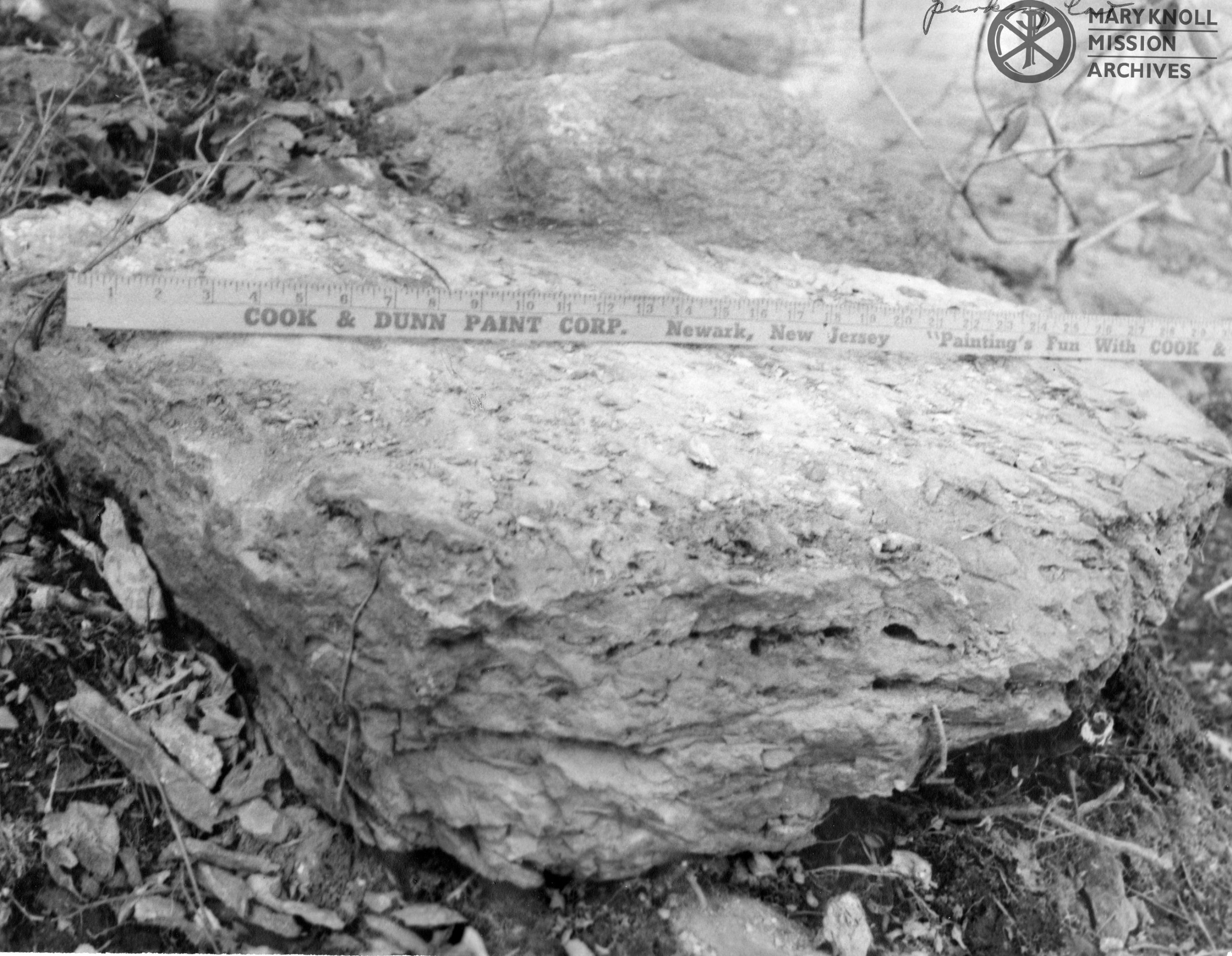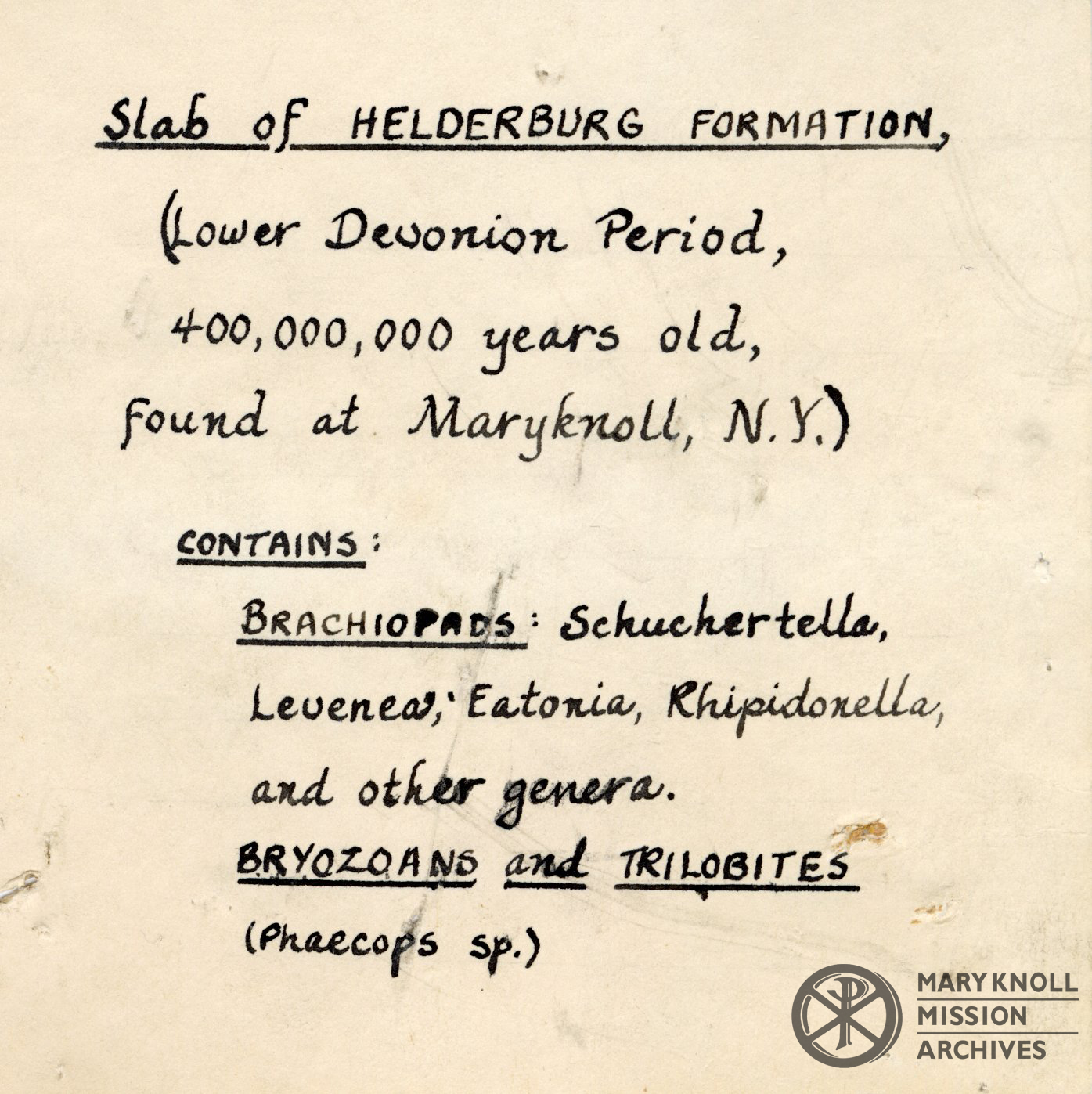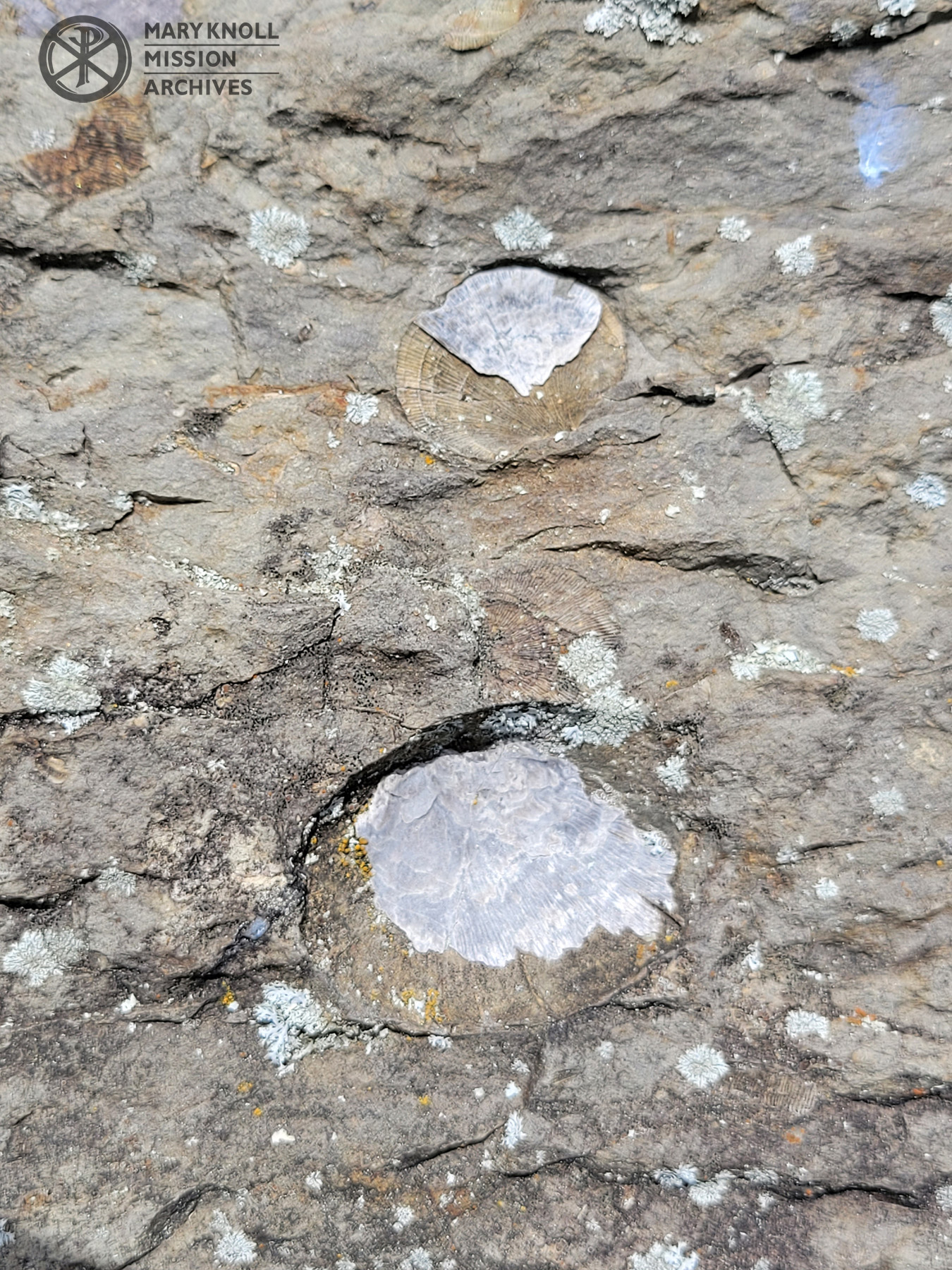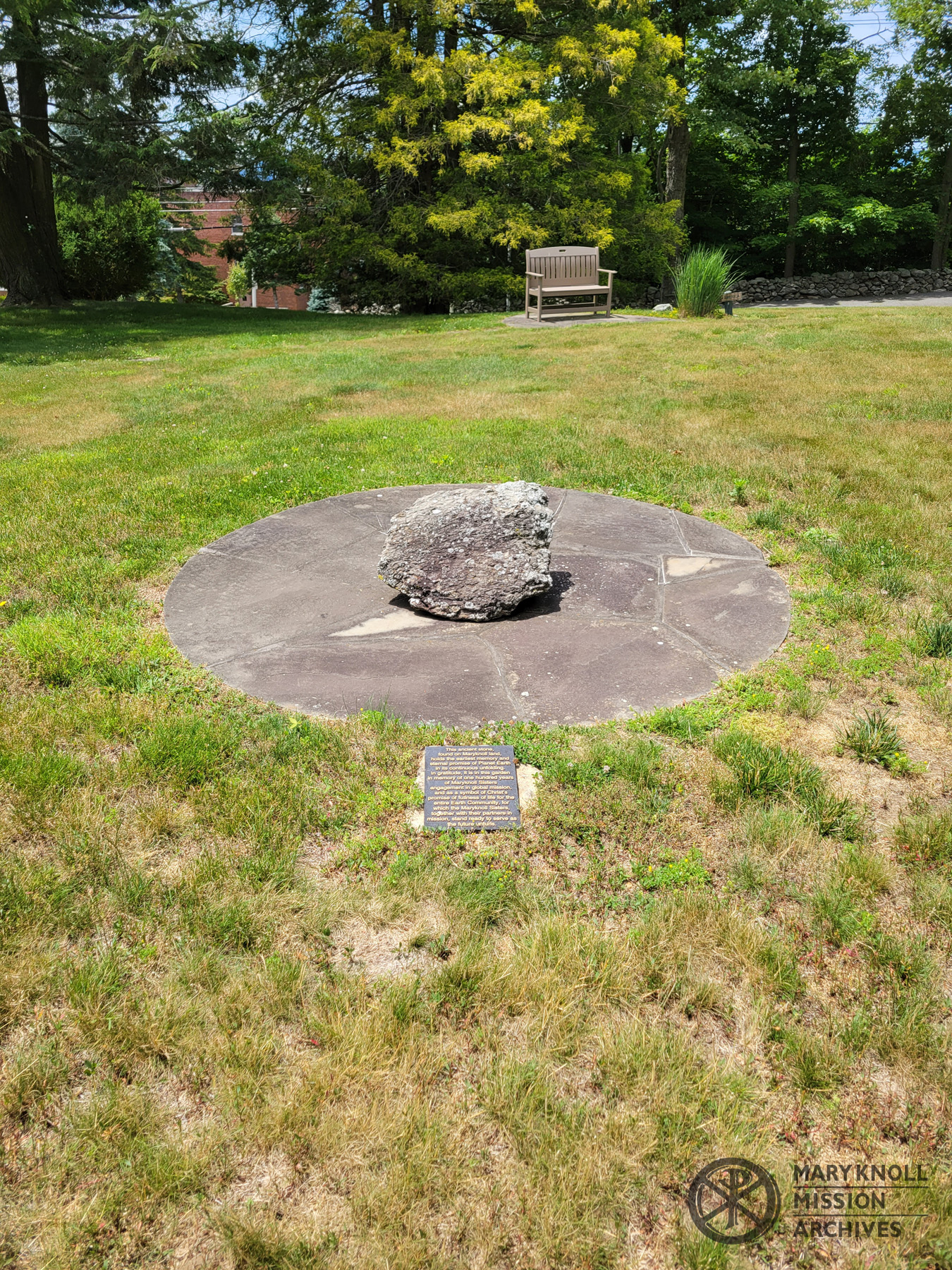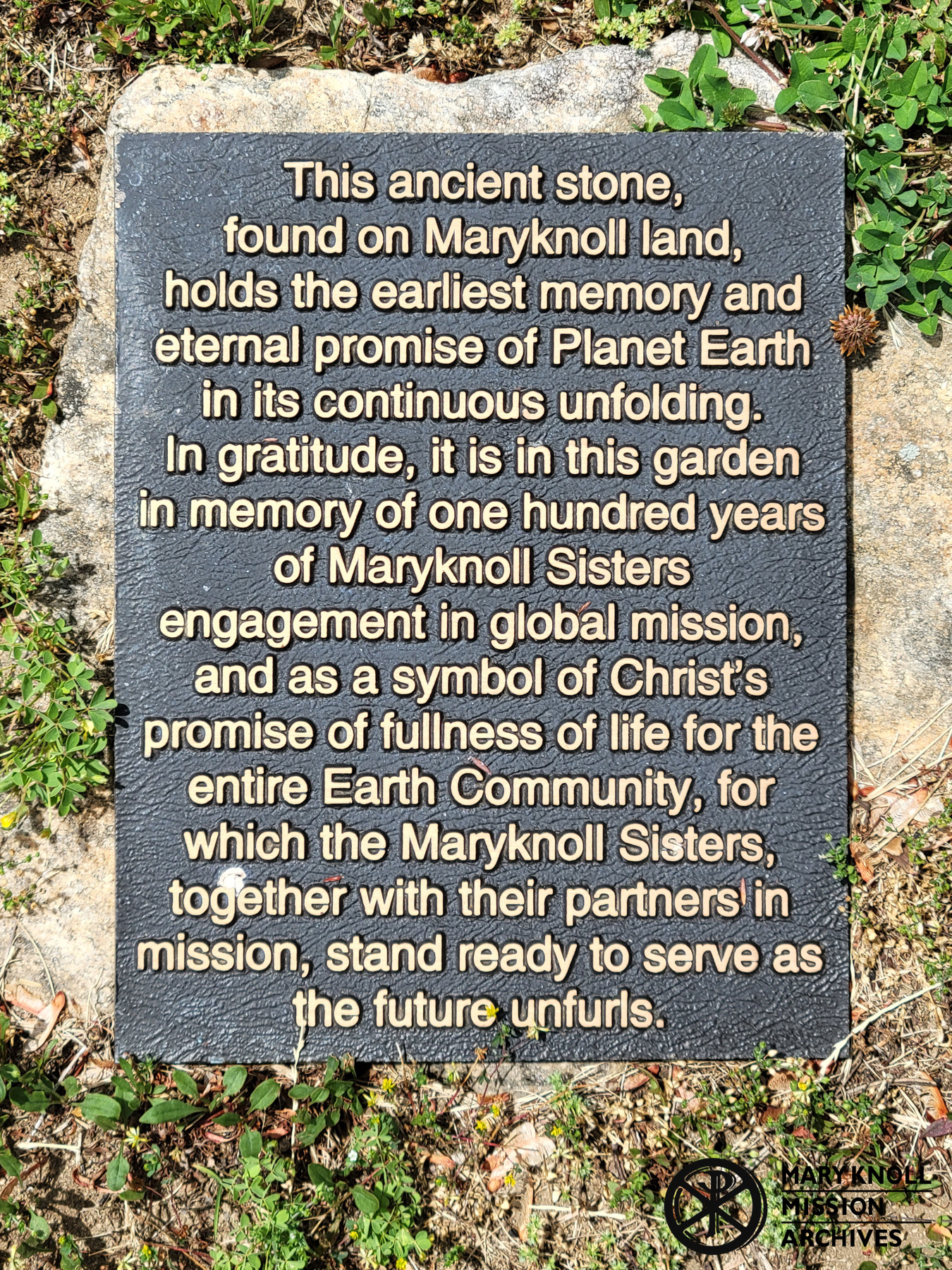The grounds of Maryknoll contain an incredible amount of history going back much longer than the 111 years Maryknollers have been here. One such example is The Slab of Helderburg Formation, a 400 million year old stone containing a large variety of ancient fossils. The stone was discovered in 1961, most likely by Sister Mary Corde Lorang and her geology class at Rogers College. Since then the Helderburg Stone has been lost, discovered, rediscovered again, and finally finding a home as a part of the Sister’s property. Join me as we look into the history of this 400 million year old rock and the Sister that discovered it, Sister Mary Corde Lorang.
A Scientist Sister
In her biography, Sr. Mary Corde Lorang is described as a “legend”, with a wide variety of interests and a “keen, critical, and scientific mind.” Upon looking at her mission career, it is hard to argue with those statements. She joined the Maryknoll Sisters on September 24, 1923 at the age of 19, and she would be a Maryknoll Sister for 55 years. Many of those years she spent as a teacher of the sciences at Rogers College, in Hawaii, and in Guatemala. Not limited to just the sciences, she also was a photographer, author of three books, and an avid weatherwoman.
Sr. Lorang was also known for having a trove of treasures, from butterfly specimens to a whole host of rocks and minerals. Just to get an idea of the scope of her treasures, I want to share part of a letter Sr. Lorang received from the Smithsonian in 1972. The letter is thanking her for donating specimens of mollusks, butterflies, birds, and equipment. The letter mentions that of the mollusks she sent, they kept 262 lots numbering over 1,000 specimens, and that’s just the ones they kept. Sr. Lorang clearly kept a lot of interesting scientific curiosities, one of which was most likely the Helderburg Stone.
The Slab of Helderburg Formation
I want to take a moment to mention Sister Doreen Longres, an active Maryknoll Sister and former head of the Environmental Office. She rediscovered the Helderburg Stone in the early 2000s and did much of the baseline research I used for this post. I should also note that the following information is partly speculative, as we do not have confirmation for many of the details. However, we can take this moment to learn how historical research at times requires you to connect a bunch of dots to create a vague picture of what probably happened. With that said, let’s dive in.
In the archive, we have photographs which clearly show the Helderburg Stone, dated November 1961. It also notes that it was found in the new Parking Lot, but I have not be able to locate where exactly that might have been. From there nothing is mentioned of the stone until 1983, when it was rediscovered by a Sister going through the Rogers Library. At the time, they could only speculate that it was Sr. Lorang’s (who had passed by that time). The stone would go undiscovered again for another two decades, being found this time by Sister Doreen Longres. Sister Doreen would go on a multi-year journey of historical research and putting the pieces together.
One of the more interesting mysteries of the Helderburg Stone is how exactly it was identified. The stone was discovered with a card dating it and listing the various species of fossils discovered in the piece. It is possible that the scientifically minded Sr. Lorang could have done all the work, but it is also possible that it was dated by the Smithsonian. Sr. Lorang did have contact with the Smithsonian from her donations, and she was intending to visit in 1972. The question would be why she did not also donate the stone, but alas there is no obvious answer.
Regardless of what the actual story behind the Helderburg stone, it’s clear the stone is a significant piece of the history of this land. As part of the Environmental Office, Sister Doreen wanted to make sure the stone remained a part of the grounds of Maryknoll. An opportunity arose when the Maryknoll Sisters celebrated their Centennial in 2012, and constructed a garden in memory of their 100 years in mission.
The Helderburg stone currently resides in the center of the Maryknoll Sisters’ Centennial Garden, accompanied by a solitary plaque. The plaque’s inscription perfectly sums up the history of the stone and how it relates to Maryknoll.
The Plaque reads:
This Ancient Stone, found on Maryknoll Land, holds the earliest memory and eternal promise of Planet Earth in its continuous unfolding. In gratitude, it is in this garden in memory of one hundred years of Maryknoll Sisters engagement in global mission, and as a symbol of fullness of life for the entire Earth Community, for which the Maryknoll Sisters, together with their partners in mission, stand ready to serve as the future unfurls.

